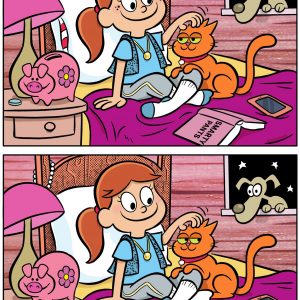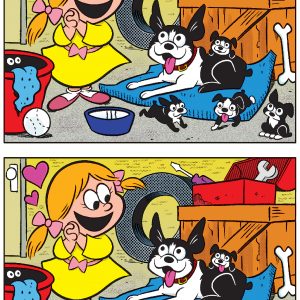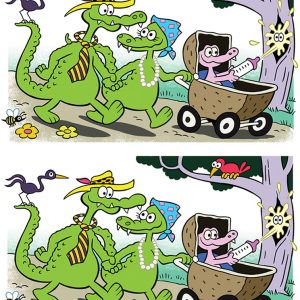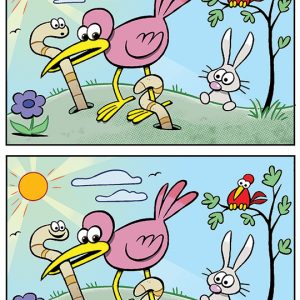If you’ve ever woken to the rattling of bins at night, you know the telltale sign: urban raccoons on the prowl, hands deep in your compost and trash, fishing out scraps with uncanny dexterity. In the cartoon scene above, one mischievous raccoon dangles a chicken leg from a compost bin while his companion wistfully wishes for pizza (or pasta). Far from being mere “trash pandas,” raccoons are savvy survivors that thrive in our cities. Here’s how you can understand their behavior, safeguard your bins, and even turn these crafty critters into urban ecosystem allies.
Why Raccoons Love Your Trash: The Science of Scavenging
Raccoons (Procyon lotor) boast nimble forepaws and an omnivorous palate that would make any food critic proud. They eat:
- Leftover meats and bones, like that drumstick in the compost bin.
- Vegetable scraps and fruit peels tossed into yard waste.
- Pet food left outside—a midnight feast for nocturnal foragers.
- Human foods: pizza crusts, pasta strands, sandwich scraps—anything calorie-dense.
Armed with a keen sense of touch and taste (their paws are almost as sensitive as human fingertips), raccoons can identify treats without even seeing them. When your bins sit unprotected, they’re an open all-you-can-eat buffet—hence, our dumpster diver clutching that savory bone.
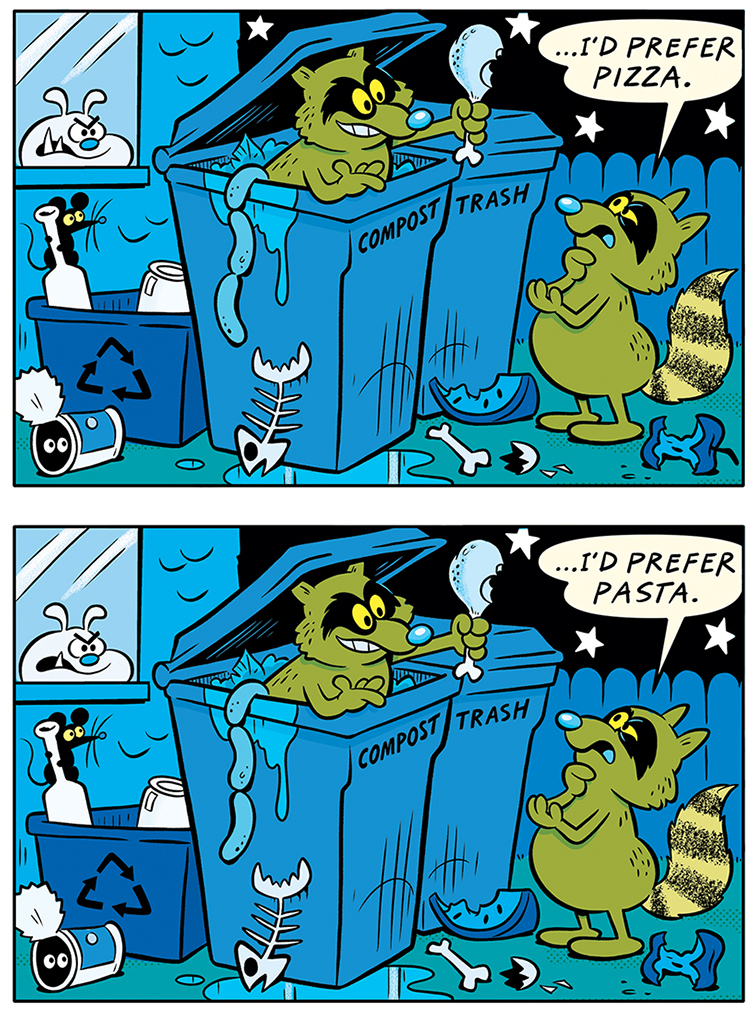
Securing Your Bins: Raccoon-Proofing 101
Want to fend off these furry foodies? You don’t need a fortress—just a few simple tweaks:
- Locking Lids: Heavy-duty bungee cords or ratchet straps keep lids firmly shut.
- Weighty Covers: Place a cinder block or large rock on top to deter climbing.
- Rigid Bins: Swap flimsy plastic for sturdier, dent-resistant metal or HDPE models.
- Motion-Activated Lights: Sudden illumination can spook nighttime visitors.
Implementing two or three of these measures can turn your trash zone from an all-you-can-eat raccoon lounge into an inaccessible vault.
Compost vs. Trash: Smart Waste Sorting
Notice our compost bin in the cartoon? Raccoons love compost almost as much as trash—especially meat scraps and grease. To reduce raccoon interest:
- Keep Compost Vegetarian: Stick to fruit and vegetable scraps, coffee grounds, and yard trimmings.
- Bury Scraps Deep: Tuck kitchen waste beneath a layer of dry leaves or newspaper to mask smells.
- Use Closed Containers: Enclosed tumblers or worm bins are less inviting than open piles.
By choosing compost materials that raccoons ignore—no greasy pizza boxes—your bin stays odor-controlled and local wildlife finds it less appealing.

Coexistence Strategies: Living Harmoniously with Raccoons
Raccoons play a vital role: they help control insect populations and disperse seeds from the fruits they eat. Here’s how to foster peaceful coexistence:
- Remove Attractants: Don’t leave pet dishes or birdseed out overnight.
- Secure Structures: Block access to attics, chimneys, and crawlspaces where raccoons might den.
- Provide Alternative Food Sources: A wildlife-friendly garden with native berry bushes can divert foragers from your bins.
By reducing easy snacks and giving raccoons natural alternatives, you respect their ecological niche while protecting your property.
Humane Deterrents: Gentle Nudges, Not Cruelty
Avoid harsh measures—raccoons are intelligent and can learn to overcome barriers. Instead, opt for:
- Motion-Activated Sprinklers: A sudden spray teaches them to keep their distance.
- Ultrasonic Devices: High-frequency sounds (inaudible to humans) can deter nocturnal scavengers.
- Scent Repellents: Commercial raccoon repellents containing capsaicin or peppermint can discourage visits (reapply regularly).
These methods nudge raccoons away without harming them, supporting both your needs and wildlife welfare.

Educating Neighbors: Community-Wide Solutions
Raccoon problems rarely stop at one yard. Rally neighbors to:
- Coordinate Bin Times: Place garbage and recycling out only on collection days.
- Share Proofing Tips: Host a mini “bin-proofing” workshop or social media group.
- Report Sick Animals: If a raccoon behaves unusually tame or aggressive, alert local wildlife rescue to check for disease.
A united neighborhood approach amplifies your raccoon-management success, creating a raccoon-unfriendly environment that redirects them to natural habitats.

Conclusion
Urban raccoons are resourceful survivors, driven by instinct and a taste for our leftover delights. While our cartoon characters lament the lack of pizza or pasta in their compost, real raccoons will feast on anything they can find—unless we outsmart them. By securing bins, managing compost contents, employing humane deterrents, and rallying community efforts, you can reclaim your nighttime peace without harming these clever creatures. After all, coexisting with wildlife means recognizing their adaptability and offering gentle guidance away from our trash, so we all can share the city—and its ecosystem—more harmoniously.
